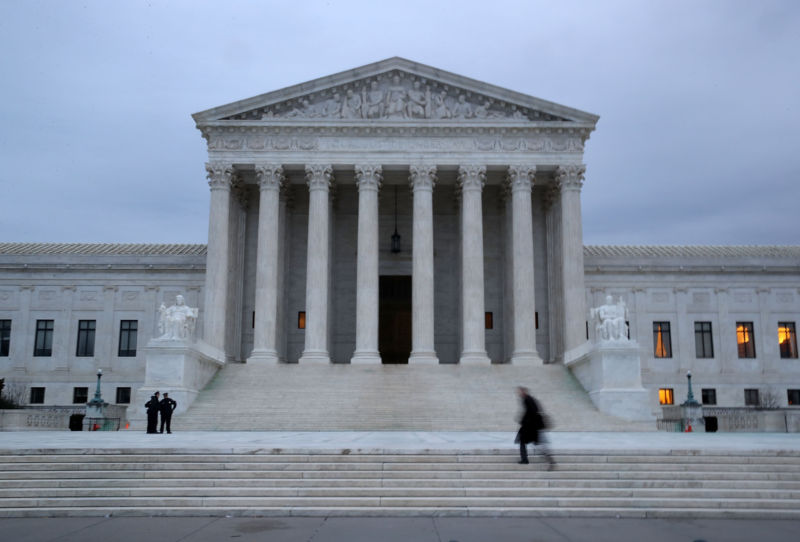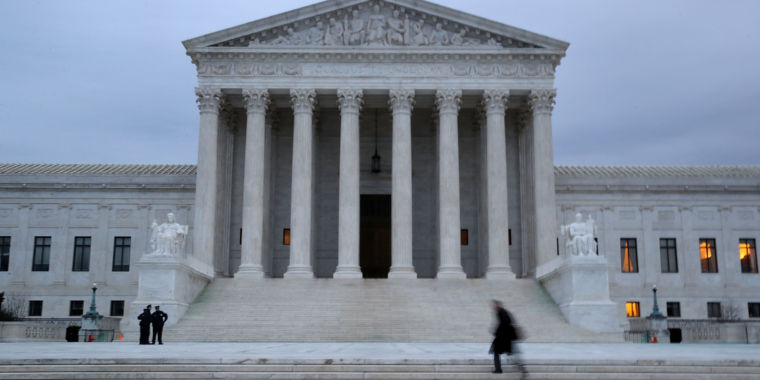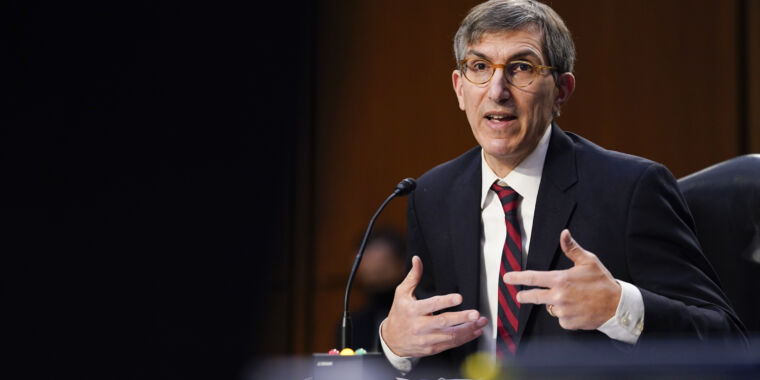
Mark Wilson/Getty Images
Thursday’s Supreme Court decision regarding the use of the Clean Air Act to regulate carbon dioxide emissions from power plants comes down to two specific issues: Should the Supreme Court take the case at all; and did Congress delegate sufficient authority to the EPA for it to implement a specific regulatory scheme first proposed during the Obama administration? But the case was decided against a backdrop of conflict between the court’s conservative and liberal justices, and some of that conflict spills into this decision.
We’ll tackle each issue below and discuss what this means for US climate policy. But one thing that should be clear is that this is a fairly minimalist decision since it applies only to the EPA’s ability to regulate carbon emissions from existing facilities and not to environmental regulations more broadly. While it doesn’t leave the EPA with an obvious next step, it leaves avenues for regulating new power plant construction.
Why now?
As described in our immediate coverage, the decision is focused on the Clean Power Plan, a set of EPA rules formulated during the Obama years that immediately faced lawsuits that put it on hold, where it remained until the Trump administration rescinded it. With yet another new administration in place, the EPA is now formulating replacement rules. As such, the EPA saw no reason for the Supreme Court to intervene at this point.
The decision from Chief Justice John Roberts lays out the logic for the court to do so. The Trump administration formally rescinded the Clean Power Plan through the same executive action that proposed a replacement: the Affordable Clean Energy rule. That rule, however, was rejected by courts immediately before Biden’s inauguration, with the court indicating that Trump’s EPA had fundamentally misunderstood the Clean Air Act. In the process, the court incidentally rejected Trump’s rejection of the Clean Power Plan, technically returning it to force.
While Biden’s EPA asked for (and received) an injunction preventing that, it could, in theory, ask for the injunction to be lifted at any point and attempt to enforce the Clean Power Plan. Therefore, Roberts concludes, it’s perfectly appropriate for the court to resolve the arguments made in the lawsuits that the Clean Power Plan faced when it was first proposed.
The dissent by the court’s three liberal justices, written by Elena Kagan, notes that there was no reason to make this choice. “[T]he Court’s docket is discretionary, and because no one is now subject to the Clean Power Plan’s terms, there was no reason to reach out to decide this case,” she wrote. Not only is it not being enforced, she notes, but reality has made it irrelevant.
Roberts argues that the Clean Power Plan is significant partly because it was expected to cause coal to drop from nearly 40 percent of the US’s energy generation to 27 percent in 2030. But Kagan notes we were already far past that target (coal supplied 22 percent of the US’s electricity last year and is still falling). This gives the EPA even less reason to want to do anything with the Clean Power Plan and thus less reason for the court to intervene. The dissent concludes that the majority tactfully chose the case to further an anti-regulatory agenda.
What’s a “system”?
As for the case itself, the decision hinges on precisely what the EPA was authorized to do when Congress passed the Clean Air Act. That act can be viewed as two components: a set of rules for pollutants that were known to be hazardous when the act passed, and a flexible mechanism that the EPA could identify and regulate additional threats that became apparent later. The recognition that carbon dioxide presented a threat triggered this latter mechanism, which has two parts.
One part involves the regulation of newly built generating facilities, which weren’t an issue in this case. So, should the EPA ever formulate rules that limit the construction of fossil fuel plants, this decision will do nothing to keep them from going into effect. The second, which is in contention, involves crafting rules for existing sources.
According to the text of the Clean Air Act, this involves the EPA identifying the “best system of emission reduction… that has been adequately demonstrated,” using that to identify feasible reductions and setting a policy that would achieve those reductions. Currently, we don’t have any systems to remove carbon dioxide from combustion gasses that qualify as “adequately demonstrated,” which severely limits what we can achieve through changes to fossil fuel plants. So instead, the EPA devised a system that would encourage grid operators to shift production to cleaner power plants, like wind and solar farms.
Nearly every aspect of this was a point of contention in this decision. The majority calls the existence of this regulatory mechanism a “little-used backwater” in arguing that it shouldn’t be relied on to drive major changes. The dissent argues that Congress crafted it as a fallback for cases where more specific regulations don’t apply, and it doesn’t make sense to criticize it for functioning as intended. While the majority feel that the term “system” to describe emissions controls is vague, the dissent thinks that it was designed to be a broad term to give the EPA flexibility in devising solutions.
In the end, the majority agreed with the arguments put forward by states and coal companies: The Clean Power Plan would result in significant changes to the country’s energy economy, so it shouldn’t be allowed without specific direction from Congress. Roberts cites the costs and losses of jobs at fossil fuel facilities predicted by the EPA to emphasize the plan’s significance. Again, the dissent points out that this is ironic, given that the country has already undergone larger change without significant disruption. (Roberts also conveniently ignores the offsetting benefits that the EPA enumerated in the Clean Power Plan.)
From the dissent’s perspective, Congress already indicated its intention to allow this in the Clean Air Act, which called for “The ‘best system’ full stop—no ifs, ands, or buts of any kind relevant here. The parties do not dispute that generation shifting [to low carbon generation sources] is indeed the ‘best system.'”








